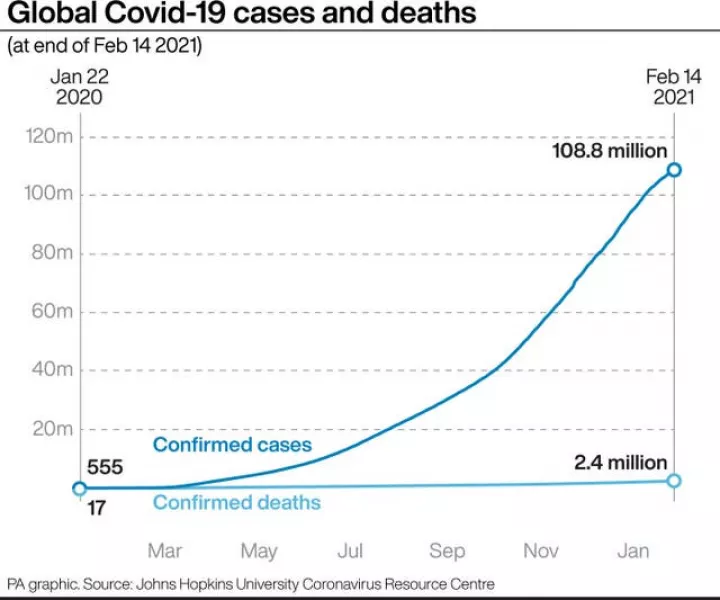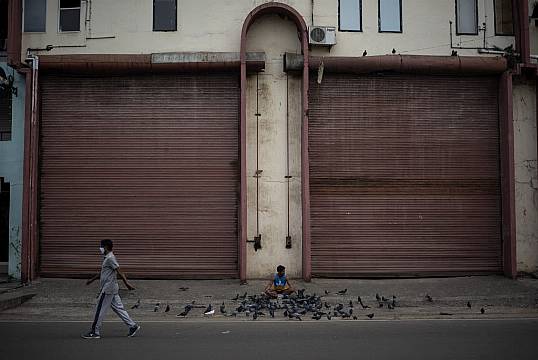Scientists are baffled by the relatively low rate of coronavirus infections in India after at one point it looked as though it might surpass the US as the country with the biggest case toll.
Infections began to plummet in September, and now the country is reporting about 11,000 new cases a day, compared to a peak of nearly 100,000, leaving experts perplexed.
They have suggested many possible explanations for the sudden drop, seen in almost every region, including that some areas of the country may have reached herd immunity or that Indians may have some preexisting protection from the virus.
The Indian government has also partly attributed the dip in cases to mask-wearing, which is mandatory in public in India and violations draw hefty fines in some cities.

But experts have noted the situation is more complicated since the decline is uniform even though mask compliance is flagging in some areas.
It is more than just an intriguing puzzle; determining what’s behind the drop in infections could help authorities control the virus in the country, which has reported nearly 11 million cases and over 155,000 deaths.
Some 2.4 million people have died worldwide.
“If we don’t know the reason, you could unknowingly be doing things that could lead to a flare-up,” said Dr Shahid Jameel, who studies viruses at India’s Ashoka University.
India, like other countries, misses many infections, and there are questions about how it is counting virus deaths.
But the strain on the country’s hospitals has also declined in recent weeks, a further indication the virus’s spread is slowing.
When recorded cases crossed nine million in November, official figures showed nearly 90% of all critical care beds with ventilators in New Delhi were full.
On Thursday, 16% of these beds were occupied.
That success cannot be attributed to vaccinations since India only began administering jabs in January — but as more people get a vaccine, the outlook should look even better, though experts are also concerned about variants identified in many countries that appear to be more contagious and render some treatments and vaccines less effective.

Among the possible explanations for the fall in cases is that some large areas have reached herd immunity — the threshold at which enough people have developed immunity to the virus, by falling sick or being vaccinated, that the spread begins to slacken, said Vineeta Bal, who studies immune systems at India’s National Institute of Immunology.
But experts have cautioned that even if herd immunity in some places is partially responsible for the decline, the population as a whole remains vulnerable — and must continue to take precautions.
This is especially true because new research suggests that people who got sick with one form of the virus may be able to get infected again with a new version.
Ms Bal, for instance, pointed to a recent survey in Manaus, Brazil, that estimated that over 75% of people there had antibodies for the virus in October — before cases surged again in January.
“I don’t think anyone has the final answer,” she said.
And, in India, the data is not as dramatic.

A nationwide screening for antibodies by Indian health agencies estimated that about 270 million, or one in five Indians, had been infected by the virus before vaccinations started — that is far below the rate of 70% or higher that experts say might be the threshold for the coronavirus, though even that is not certain.
“The message is that a large proportion of the population remains vulnerable,” said Dr Balram Bhargava, who heads India’s premier medical research body, the Indian Council of Medical Research.
But the survey offered other insight into why India’s infections might be falling.
It showed that more people had been infected in India’s cities than in its villages, and that the virus was moving more slowly through the rural hinterland.
“Rural areas have lesser crowd density, people work in open spaces more and homes are much more ventilated,” said Dr K. Srinath Reddy, president of the Public Health Foundation of India.
If some urban areas are moving closer to herd immunity, wherever that threshold lies, and are also limiting transmission through masks and physical distancing and thus are seeing falling cases, then maybe the low speed at which the virus is passing through rural India can help explain sinking numbers, suggested Dr Reddy.
Another possibility is that many Indians are exposed to a variety of diseases throughout their lives — cholera, typhoid and tuberculosis, for instance, are prevalent — and this exposure can prime the body to mount a stronger, initial immune response to a new virus.







